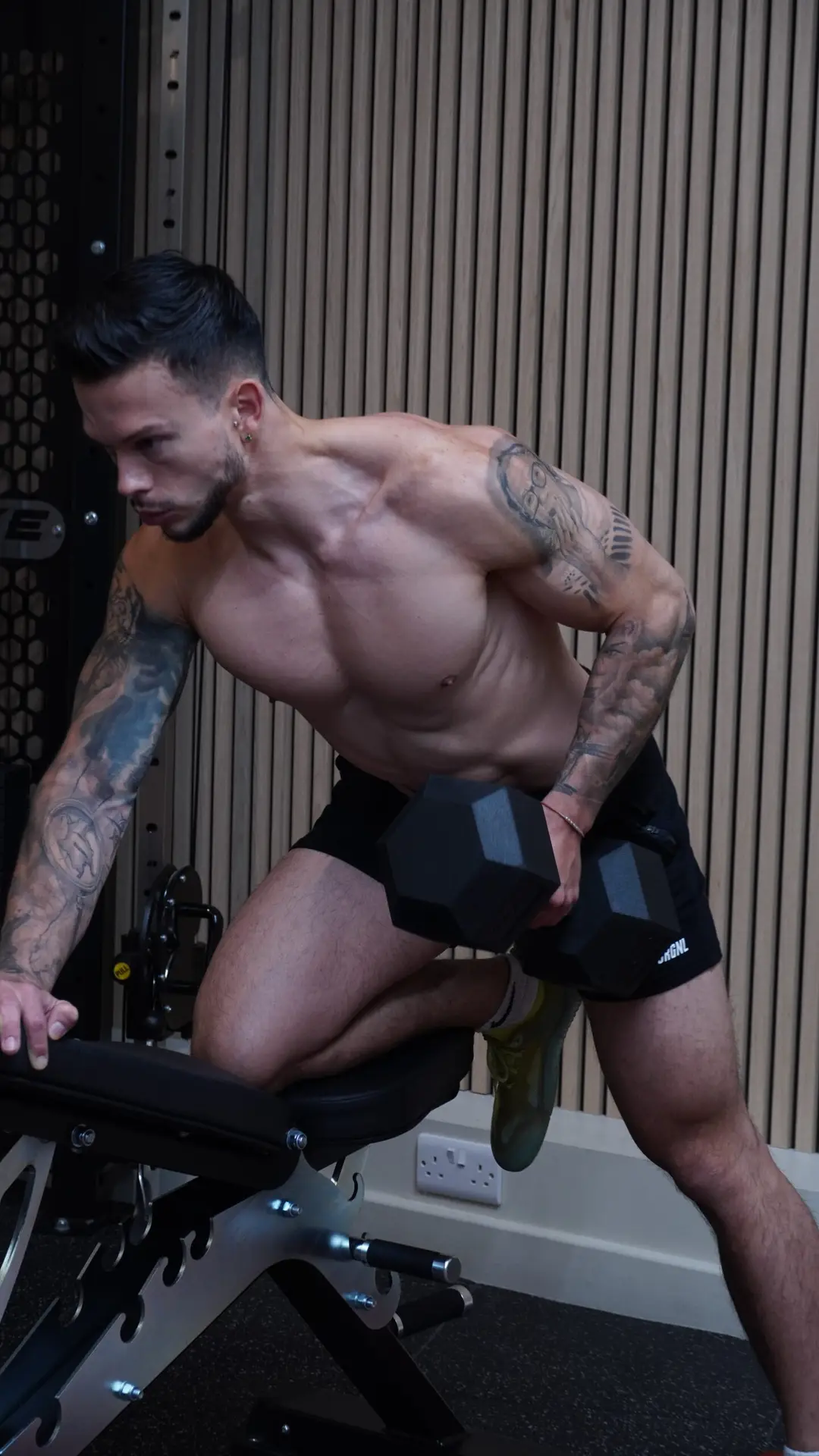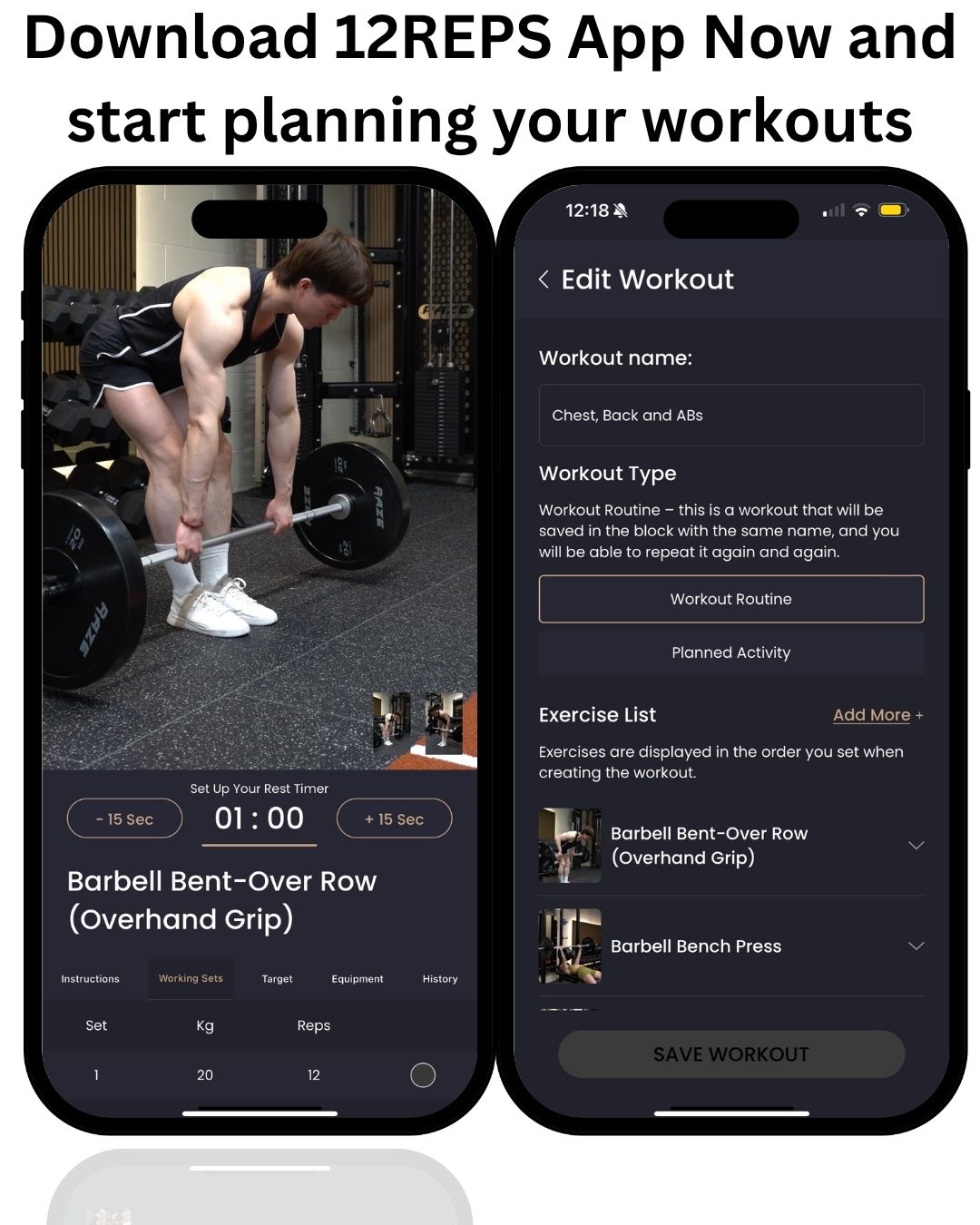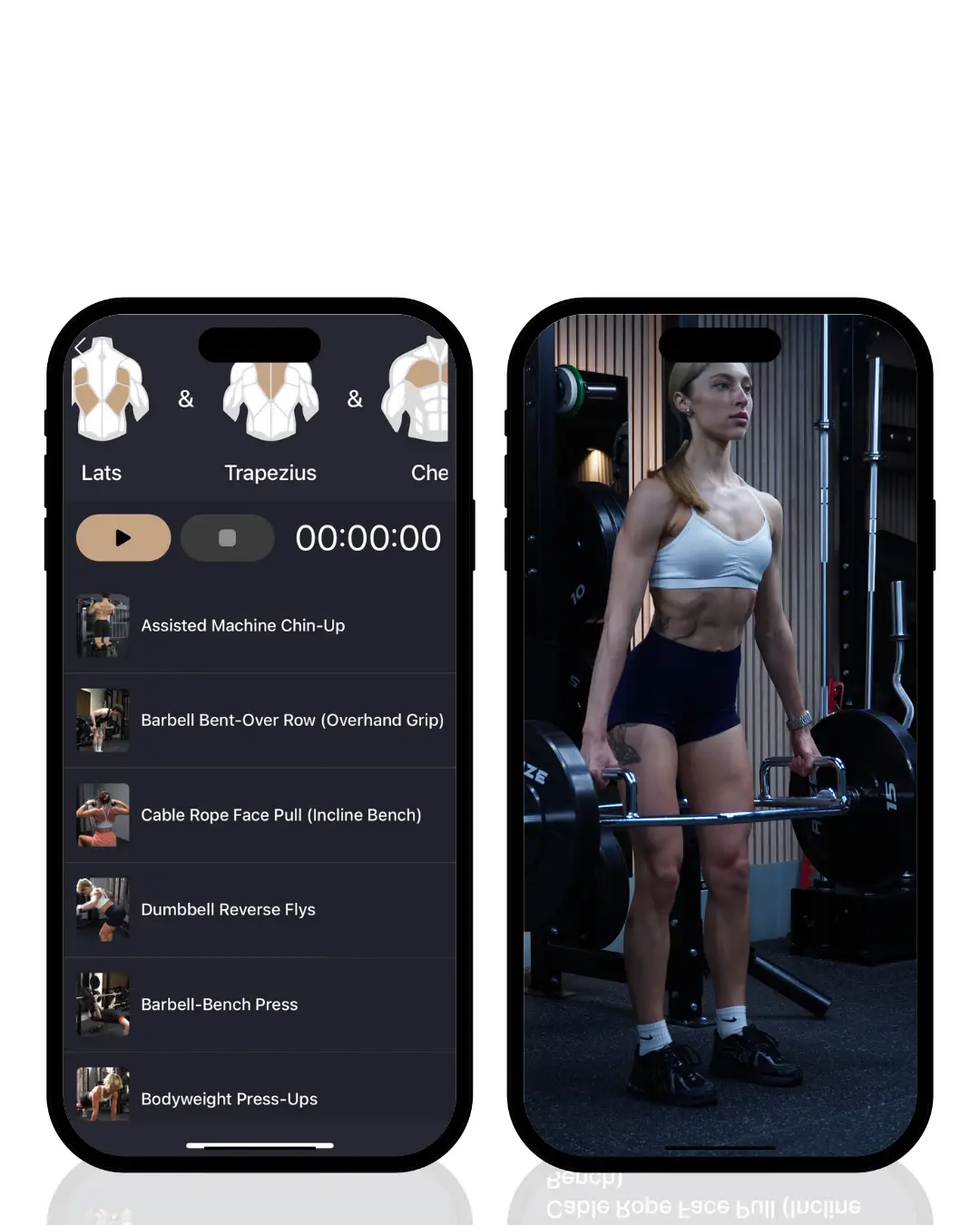By Will Duru, BSc (Hons) Sport and Exercise Science, Award-winning Personal Trainer with over 10 years of experience in strength training and optimising recovery
One of the most confusing topics in fitness is rep ranges. Should you lift heavy for 5 reps? Go moderate for 8 reps? Or lighter for 15 reps? I get asked this question almost daily by my clients, and I understand why it’s so confusing.
The internet is full of conflicting advice. One expert says low reps are best for strength, another claims high reps are better for muscle growth. Some programs use different rep ranges on different days, making everything even more complicated.
After 10 years of training people and studying exercise science, I want to give you a clear, research-based comparison of different rep ranges. I’ll show you exactly what each rep range does, who it’s best for, and why 12 reps come out on top for most people.
This isn’t about my personal opinion. I’ll share the actual research and my real-world experience with hundreds of clients. By the end of this guide, you’ll know exactly which rep range is right for your goals.
Here’s what we’ll cover: the science behind different rep ranges, detailed comparisons of each approach, and practical recommendations based on your specific goals. Most importantly, I’ll show you why 12-rep training offers the best overall results for most people.
While the research can be complex, the 12reps app simplifies the decision by focusing on the scientifically optimal 12-rep range. Let’s dive into the evidence and see why this approach works so well.

Understanding Rep Ranges and Training Adaptations
Before we compare different rep ranges, you need to understand how your body responds to different types of training. This isn’t just theory; it’s the foundation that determines which approach will work best for you.
The Rep Range Spectrum
Think of rep ranges as different tools in a toolbox. Each one is designed for a specific job:
1-5 reps (Strength/Power Zone): This is maximum strength territory. You’re lifting very heavy weights that you can only handle for a few reps. Your nervous system learns to recruit muscle fibers more efficiently, and you get incredibly strong at lifting heavy things.
6-8 reps (Strength-Hypertrophy Zone): This is the middle ground. You’re still lifting fairly heavy weights, but you can do a few more reps. You get both strength gains and some muscle growth.
9-15 reps (Hypertrophy Zone): This is the muscle-building sweet spot. The weight is moderate, but you’re doing enough reps to really challenge your muscles. This is where 12 reps sits, and it’s optimal for muscle growth.
15+ reps (Endurance Zone): This is about muscular endurance and conditioning. The weights are lighter, but you’re doing lots of reps. Great for endurance athletes or rehabilitation.
How Your Body Adapts
Your body is incredibly smart. It adapts specifically to the demands you place on it. This is called the principle of specificity, and it’s crucial for understanding why different rep ranges produce different results.
When you lift very heavy weights for low reps, your nervous system gets better at recruiting muscle fibers quickly and efficiently. You get stronger, but you don’t necessarily get much bigger.
When you lift moderate weights for higher reps, your muscles have to work for longer periods. This creates more metabolic stress and muscle damage, which are key drivers of muscle growth.
When you lift light weights for very high reps, your muscles learn to resist fatigue and keep working for extended periods. You build endurance, but strength and size gains are limited.
Individual Variations Matter
Here’s something important that many people overlook: everyone responds slightly differently to training. Some people are naturally better at low-rep, high-intensity work. Others thrive with higher reps and moderate weights.
However, the research shows that most people, especially those with general fitness goals, respond best to moderate rep ranges like 12 reps. This is why I recommend it to the majority of my clients.
The key is understanding that while there’s some overlap between zones, each rep range has its primary strength. The question is: which primary strength matches your goals?
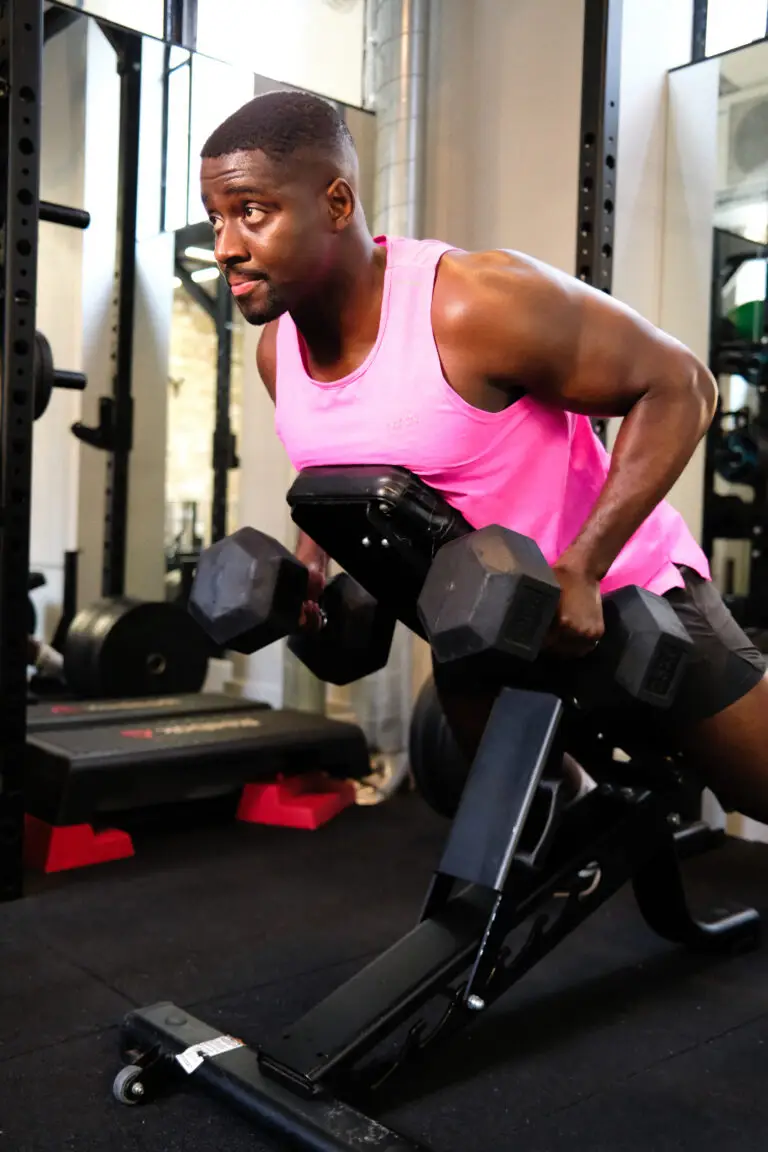
Low Rep Training (1-5 Reps): Strength Focus
Before we compare different rep ranges, you need to understand how your body responds to different types of training. This isn’t just theory; it’s the foundation that determines which approach will work best for you.
The Rep Range Spectrum
Think of rep ranges as different tools in a toolbox. Each one is designed for a specific job:
1-5 reps (Strength/Power Zone): This is maximum strength territory. You’re lifting very heavy weights that you can only handle for a few reps. Your nervous system learns to recruit muscle fibers more efficiently, and you get incredibly strong at lifting heavy things.
6-8 reps (Strength-Hypertrophy Zone): This is the middle ground. You’re still lifting fairly heavy weights, but you can do a few more reps. You get both strength gains and some muscle growth.
9-15 reps (Hypertrophy Zone): This is the muscle-building sweet spot. The weight is moderate, but you’re doing enough reps to really challenge your muscles. This is where 12 reps sits, and it’s optimal for muscle growth.
15+ reps (Endurance Zone): This is about muscular endurance and conditioning. The weights are lighter, but you’re doing lots of reps. Great for endurance athletes or rehabilitation.
How Your Body Adapts
Your body is incredibly smart. It adapts specifically to the demands you place on it. This is called the principle of specificity, and it’s crucial for understanding why different rep ranges produce different results.
When you lift very heavy weights for low reps, your nervous system gets better at recruiting muscle fibers quickly and efficiently. You get stronger, but you don’t necessarily get much bigger.
When you lift moderate weights for higher reps, your muscles have to work for longer periods. This creates more metabolic stress and muscle damage, which are key drivers of muscle growth.
When you lift light weights for very high reps, your muscles learn to resist fatigue and keep working for extended periods. You build endurance, but strength and size gains are limited.
Individual Variations Matter
Here’s something important that many people overlook: everyone responds slightly differently to training. Some people are naturally better at low-rep, high-intensity work. Others thrive with higher reps and moderate weights.
However, the research shows that most people, especially those with general fitness goals, respond best to moderate rep ranges like 12 reps. This is why I recommend it to the majority of my clients.
The key is understanding that while there’s some overlap between zones, each rep range has its primary strength. The question is: which primary strength matches your goals?
Moderate-Low Rep Training (6-8 Reps): Strength-Hypertrophy
The 6-8 rep range is interesting because it sits right between strength and muscle building. Many people see this as the best of both worlds, but the reality is more nuanced.
The Appeal of 6-8 Reps
This rep range uses about 75-85% of your maximum strength, which is heavy enough to build significant strength but not so heavy that you can only do a few reps. You get solid strength gains while also stimulating some muscle growth.
Many intermediate lifters gravitate toward this range because it feels challenging without being overwhelming. The weights are substantial enough to feel impressive, but manageable enough to maintain good form.
I’ve had clients make excellent progress in the 6-8 rep range, especially those who started with higher reps and wanted to focus more on strength development.
The Limitations Become Apparent
The problem with 6-8 reps is that it’s not optimal for either strength or muscle growth. You’re in a middle ground that doesn’t maximise either adaptation.
For pure strength, 1-5 reps is more effective because you’re training your nervous system to handle maximum loads. For muscle growth, 9-15 reps is superior because you get more volume and metabolic stress.
Recovery can also be challenging. The weights are heavy enough to stress your nervous system significantly, but you’re doing enough reps to create substantial muscle fatigue. This combination can be demanding on your recovery capacity.
Plateau Potential
I’ve noticed that people often plateau quickly in the 6-8 rep range. The weights become too heavy to add reps easily, but adding weight becomes increasingly difficult. Progress can stall, leading to frustration.
With 12 reps, you have more flexibility. You can add reps (go from 12 to 13, then 14), improve form and control, or add weight. This variety keeps progress moving forward.
When 6-8 Reps Makes Sense
The 6-8 rep range works well for:
– Intermediate lifters transitioning from higher to lower reps
– People who want to focus on strength while maintaining some muscle growth
– Those who find 12 reps too easy but aren’t ready for very heavy lifting
– Specific exercises where the rep range feels natural
The 12-Rep Advantage
While 6-8 reps have their place, research consistently shows that 12 reps provide superior muscle growth with similar strength gains [2]. The higher volume and metabolic stress of 12-rep training typically produce better overall results.
The 6-8 rep range offers some benefits, but 12 reps provides superior muscle growth with similar strength gains. For most people, the extra muscle development and lower injury risk of 12-rep training make it the better choice.

The 12-Rep Sweet Spot: Optimal Hypertrophy
This is where the magic happens. After training hundreds of clients and studying the research extensively, I’m convinced that 12 reps is the optimal rep range for most people. Let me show you why.
The Perfect Storm for Muscle Growth
Twelve reps hits all the key mechanisms for muscle growth simultaneously. You get significant mechanical tension (the weight is challenging), substantial metabolic stress (that burning feeling in the last few reps), and optimal muscle damage (the microscopic tears that heal back stronger).
The weight you use for 12 reps is typically 65-75% of your maximum, which is heavy enough to challenge your muscles but light enough to maintain perfect form throughout the set. This balance is crucial for both results and safety.
Superior Muscle Building
Research consistently shows that the 8-15 rep range is optimal for muscle hypertrophy, and 12 reps sits right in the sweet spot. In my experience, clients who train with 12 reps build muscle faster and more consistently than those using other rep ranges.
The volume (total amount of work) is perfect. You’re doing enough reps to accumulate significant training stress, but not so many that you’re just going through the motions with light weights.
Significant Strength Development
Here’s what surprises many people: 12-rep training builds substantial strength. While it won’t make you as strong as low-rep training in terms of maximum lifts, it builds the kind of functional strength that helps in daily life.
My clients who train with 12 reps get stronger in a way that transfers to everything they do. They can carry groceries more easily, move furniture without strain, and feel more capable in their bodies.
Safety and Sustainability
The injury risk with 12-rep training is significantly lower than heavy lifting. The moderate weights allow you to focus on perfect form, and small technique mistakes don’t lead to serious injuries.
This safety advantage means you can train consistently over months and years without setbacks. Consistency is the key to long-term results, and 12-rep training allows for incredible consistency.
Perfect for Form Development
When you do 12 reps, you get 12 opportunities to practice the movement pattern in each set. This repetition is crucial for developing perfect technique, especially for beginners.
Good form becomes automatic when you practice it repeatedly with manageable weights. This foundation serves you well if you ever want to lift heavier weights later.
Versatility Across Exercises
Twelve reps works well for virtually every exercise. Squats, deadlifts, bench press, rows, shoulder press, you name it. This consistency makes program design simple and effective.
Some rep ranges work better for certain exercises than others, but 12 reps is universally effective. This makes it perfect for full-body programs and general fitness goals.
Time Efficiency
A 12-rep set takes about 30-40 seconds to complete, which is perfect for maintaining intensity while allowing adequate rest between sets. You’re not rushing through light weights or grinding through heavy singles.
The workout pace feels natural and sustainable. You can maintain focus and intensity throughout your entire session.
Suitable for All Fitness Levels
I’ve used 12-rep training successfully with complete beginners and competitive athletes. The rep range is forgiving enough for beginners to learn proper form, but challenging enough to continue providing results as you advance.
Beginners can start with bodyweight or light weights and gradually progress. Advanced trainees can use substantial weights and still benefit from the higher volume and metabolic stress.
This is why the 12reps app focuses exclusively on this optimal range. It provides the best overall results for most people, combining muscle growth, strength development, safety, and sustainability in one approach.

Higher Rep Training (15+ Reps): Endurance Focus
High-rep training has its place in fitness, but it’s often misunderstood. Let me explain when it works and when 12 reps is still the better choice.
The Benefits of High-Rep Training
When you train with 15, 20, or even 30+ reps, you’re primarily developing muscular endurance. Your muscles learn to resist fatigue and keep working for extended periods. This is valuable for endurance athletes and certain sports.
High-rep training is also very safe. The weights are light, so the injury risk is minimal. This makes it perfect for rehabilitation, older adults, or people returning to exercise after an injury.
There’s also a cardiovascular benefit to high-rep training. Your heart rate stays elevated throughout the set, providing some cardio conditioning along with the strength work.
The Limitations Are Significant
The biggest drawback of high-rep training is limited muscle growth. While you can build some muscle with high reps, it’s not nearly as effective as moderate rep ranges like 12 reps.
The weights are simply too light to provide optimal muscle-building stimulus. Your muscles adapt by improving endurance rather than growing significantly larger or stronger.
High-rep training is also very time-consuming. A set of 25 reps takes much longer than a set of 12 reps, and you often need more sets to get the same training effect.
When High Reps Make Sense
High-rep training is appropriate for:
– Endurance athletes who need muscular endurance
– Rehabilitation and injury recovery
– Older adults or those with joint issues
– Learning movement patterns with very light weights
– Adding variety to break through plateaus
The Muscle Building Reality
If your goal is to build muscle and strength, high-rep training is not optimal. Research shows that while you can build some muscle with high reps, moderate rep ranges like 12 reps are significantly more effective [3].
The metabolic stress from high reps can contribute to muscle growth, but it’s not enough to compensate for the lack of mechanical tension from heavier weights
Time and Efficiency Considerations
High-rep training requires a significant time investment for relatively modest results. If you’re busy and want maximum results from your workout time, 12-rep training is much more efficient.
You can complete an effective 12-rep workout in 45-60 minutes, while achieving similar results with high reps might take 90+ minutes.
The 12-Rep Advantage
While high-rep training has its benefits, 12 reps provide better muscle building with similar safety benefits. You get more results in less time, with a more manageable and sustainable approach.
For most people with general fitness goals, 12-rep training is simply more practical and effective than high-rep approaches.
While high-rep training has its place, 12 reps offer better muscle building with similar safety benefits. Unless you have specific endurance goals or are in rehabilitation, 12-rep training will give you better results in less time.
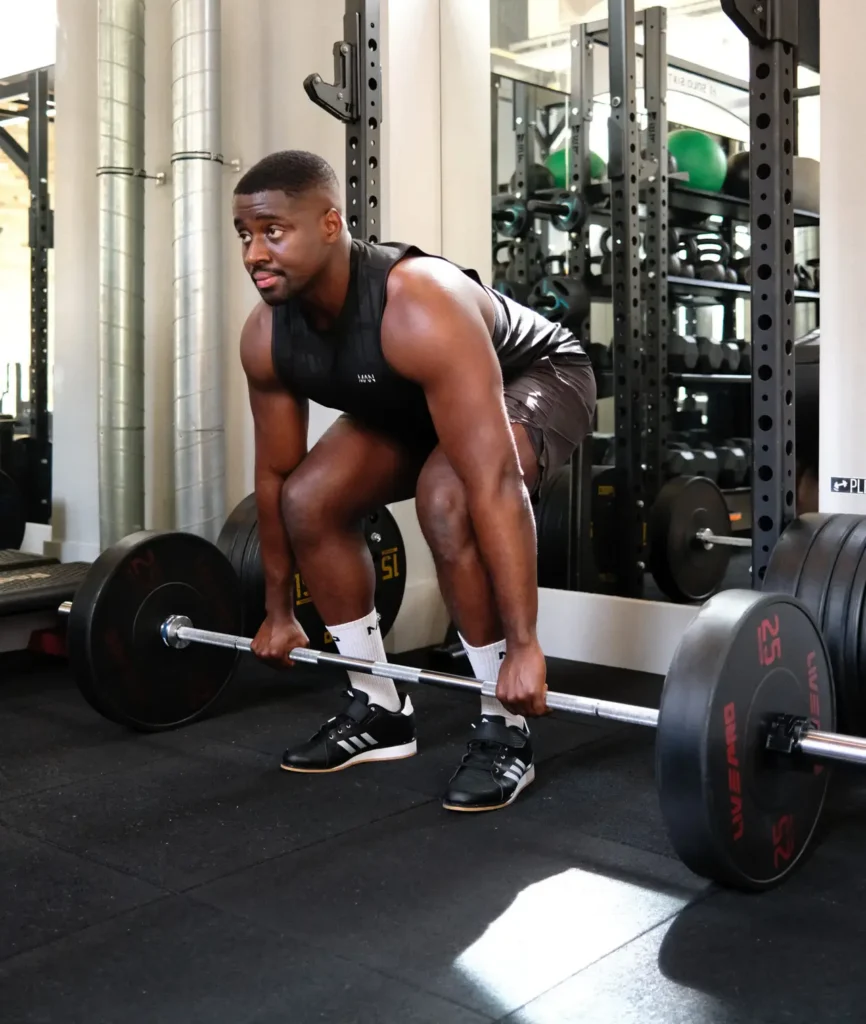
Choosing the Right Rep Range for Your Goals
While I believe 12-rep training is optimal for most people, I want to give you a framework for making the best decision based on your specific situation and goals.
Primary Goal Assessment
Start by honestly assessing your primary goal:
Maximum Strength: If you want to lift the heaviest weights possible and don’t care much about muscle size, low-rep training (1-5 reps) is your best bet. This is for competitive powerlifters and strength athletes.
Muscle Growth: If you want to build muscle and look better, 12-rep training is optimal. You’ll also get plenty of functional strength as a bonus.
General Fitness: If you want to be stronger, look better, feel healthier, and improve your quality of life, 12-rep training checks all the boxes.
Endurance Performance: If you’re an endurance athlete or need muscular endurance for your sport, higher reps (15+) make sense as part of your program.
Experience Level Considerations
Beginners: Should always start with 12-rep training. It’s safe, effective, and allows you to learn proper form while getting excellent results.
Intermediate: Can experiment with different rep ranges but will likely get best results sticking primarily with 12 reps.
Advanced: May benefit from periodizing different rep ranges but should still use 12 reps as the foundation of their training.
Lifestyle Factors
Time Availability: If you’re busy, 12-rep training provides maximum results in minimum time. High-rep training requires too much time, and low-rep training requires longer rest periods.
Stress Levels: If you’re dealing with high life stress, 12-rep training is less demanding on your nervous system than heavy lifting.
Recovery Capacity: If you don’t sleep well or have other recovery challenges, 12-rep training is more forgiving than low-rep training.
Equipment and Facility Limitations
Home Gym: Twelve-rep training works perfectly with basic equipment like dumbbells and a bench.
Commercial Gym: All rep ranges are possible, but 12 reps give you the most flexibility and don’t require specialised equipment.
Travel: Twelve-rep training adapts well to hotel gyms and limited equipment situations.
Long-Term Planning
Think about your fitness journey over years, not just months. Which approach can you stick with consistently? Which will keep you healthy and injury-free? Which will continue providing results as you advance?
For most people, these questions all point to 12-rep training as the optimal long-term approach.
Integration Strategies
While I recommend 12 reps as your primary approach, you can occasionally integrate other rep ranges:
– Use higher reps (15-20) for warm-up sets or deload weeks
– Experiment with lower reps (6-8) occasionally for variety
– Use very high reps (20+) for rehabilitation or active recovery
But keep 12 reps as your foundation, using other rep ranges sparingly and strategically.
For most people with general fitness goals, 12-rep training provides the optimal balance. The 12-rep app makes it easy to implement this approach effectively, handling all the programming details automatically.

Conclusion and Recommendations
After comparing all the major rep ranges, the evidence is clear: 12-rep training offers the best overall results for the majority of people. Let me summarise why this approach wins.
The 12-Rep Advantage
Twelve reps provide optimal muscle growth, which is what most people want from their training. The research consistently shows that moderate rep ranges like 8-15 reps are best for hypertrophy, and 12 reps sit perfectly in this range.
You also get substantial strength development. While you won’t build as much maximum strength as low-rep training, you’ll develop functional strength that transfers to daily activities and makes you feel more capable.
The safety profile is excellent. Moderate weights significantly reduce injury risk while still providing challenging workouts. This safety advantage allows for consistent training over months and years.
Time efficiency is outstanding. You can get excellent results with 45-60 minute workouts, making it perfect for busy lifestyles.
Most importantly, 12-rep training is sustainable long-term. You can stick with this approach for years and continue seeing results without burning out or getting injured.
When Other Rep Ranges Make Sense
Low reps (1-5) are best for competitive powerlifters and strength athletes who need maximum strength above all else. For everyone else, the injury risk and limited muscle growth make this approach less appealing.
Moderate-low reps (6-8) can work for intermediate lifters who want to focus more on strength, but 12 reps typically provides better overall results.
High reps (15+) are valuable for endurance athletes, rehabilitation, and older adults, but they’re not optimal for general fitness goals.
My Professional Recommendation
Based on 10 years of training people and extensive study of the research, I recommend 12-rep training for:
– Anyone with general fitness goals
– People who want to build muscle and strength
– Beginners learning proper form
– Busy people who want maximum results in minimum time
– Anyone prioritising long-term health and sustainability
Your Next Steps
If you’re convinced that 12-rep training is right for you, here’s what to do:
- Start with basic compound exercises like squats, deadlifts, bench press, and rows
- Use weights that challenge you for 12 reps with good form
- Focus on progressive overload by gradually increasing weight or reps
- Train consistently 3-4 times per week
- Be patient and trust the process
Scientific References
[2] Kubo, K., Ikebukuro, T., & Yata, H. (2021). Effects of 4, 8, and 12 repetition maximum resistance training protocols on muscle volume and strength. *Journal of Strength and Conditioning Research*, 35(4), 879-885. https://journals.lww.com/nsca-jscr/fulltext/2021/04000/Effects_of_4,_8,_and_12_Repetition_Maximum.1.aspx
[3] Schoenfeld, B. J., Grgic, J., Ogborn, D., & Krieger, J. W. (2017). Strength and hypertrophy adaptations between low-vs. high-load resistance training: a systematic review and meta-analysis. *Journal of Strength and Conditioning Research*, 31(12), 3508-3523. https://journals.lww.com/nsca-jscr/fulltext/2017/12000/Strength_and_Hypertropy_Adaptations_Between_Low_.31.aspx

